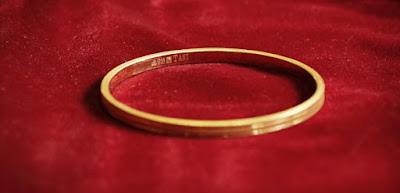Understanding KDM, 916 Gold, and Gold's Hallmarks
In addition to the gold price, other factors to consider when purchasing gold jewellery include the item's purity, the hallmarking centre's mark, the jeweller's mark, and the assay. Recently, just one trustworthy technique has emerged for checking the purity of jewellery-grade gold.
Before the BIS hallmarking programme was started, consumers in India were hesitant to purchase gold. We'll take a quick look at the fundamentals of BIS Hallmark gold, KDM gold, and 916 gold, three of the most typical varieties you'll encounter while shopping for precious metals. If we can disentangle the meanings of these three concepts, we can find the most consistent and pure gold.
A True Gem
Hallmarked gold has been certified as having passed a stringent quality assurance and authentication process. The government agency known as the Bureau of Indian Standards (BIS) is responsible for hallmarking gold to ensure its authenticity and quality. A hallmarked gold item provides evidence that the gold used in its manufacturing is pure enough to pass muster under the BIS Act. The government of India recognises only the BIS to manage the certification system for hallmarking gold items, including jewellery, coins, and bars. The BIS has accredited several hallmarking and assaying facilities for legitimate jewellers to get their wares hallmarked and verified.
Hallmarked gold items include a four-part laser etching: the standard BIS Logo, Purity in Karat and Fineness, the logo or number of the Assaying and Hallmarking Centre, and the Jeweller's Identification mark or logo. Please see our guide for further information on these considerations.
KDM Gold
Understanding kdm gold is greatly aided by familiarity with the processes involved in creating gold jewellery. Because of its malleability, gold requires solder filler to take on the complicated shapes necessary for jewellery. A solder made from gold and another metal with a lower melting point may be melted to combine gold parts without damaging the precious metal. Historically, this solder was made by combining around 60% gold and 40% copper.
Because of its longevity and ease of manufacture, it was often used for jewellery. Inadequately pure solder (only 60%) was produced as a consequence. Thus, the metal produced by melting this jewellery is of lower purity than 22 Karat. For this reason, you could see a 22/20 seal on a piece of vintage jewellery (20 meaning the melting purity of 20 karats).
To combat these difficulties and preserve the value of pure gold, cadmium began to be used as a replacement for copper. The advantage was that combining gold and cadmium at a ratio of 92% to 8% could attain a 92% pure count. This made certain that the quality and polish of the jewellery would remain constant regardless of the amount of solder utilised. KDM gold is the name given to jewellery made from cadmium-soldered gold. However, the BIS has banned this kind of gold due to concerns that it poses health risks to both the artists who work with it and the individuals who wear it.
BIS 916 Gold, which has 91.6 grammes of gold per 100 grammes, is used to make delicate jewellery. Gold is measured in terms of purity and is sold in various forms, including 24 karats, 23 karat, 22 karats, 18 karat, 14 karat, ten karat, etc. Hallmarked 22-karat gold is referred to as "BIS 916" gold, with the "916" denoting the gold's purity level. For the same reason that 958 gold is 23 karats, 750 gold means 18 karats.
Conclusion




Comments
Post a Comment